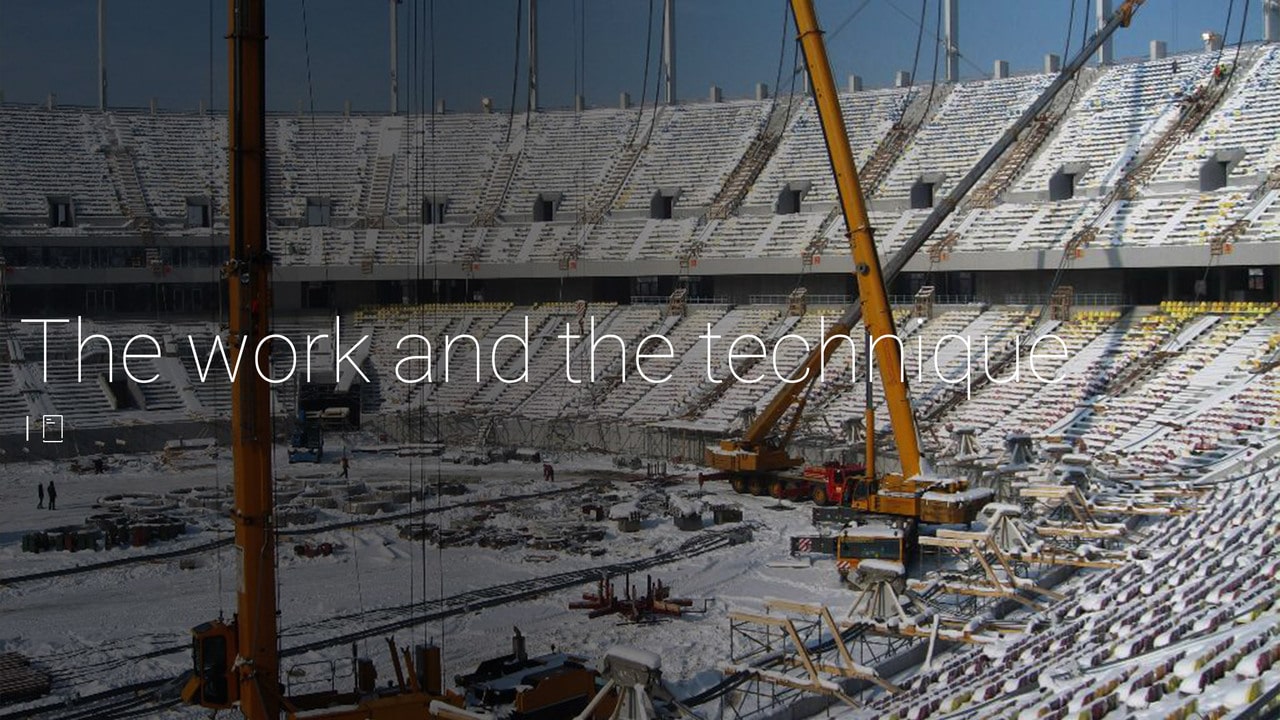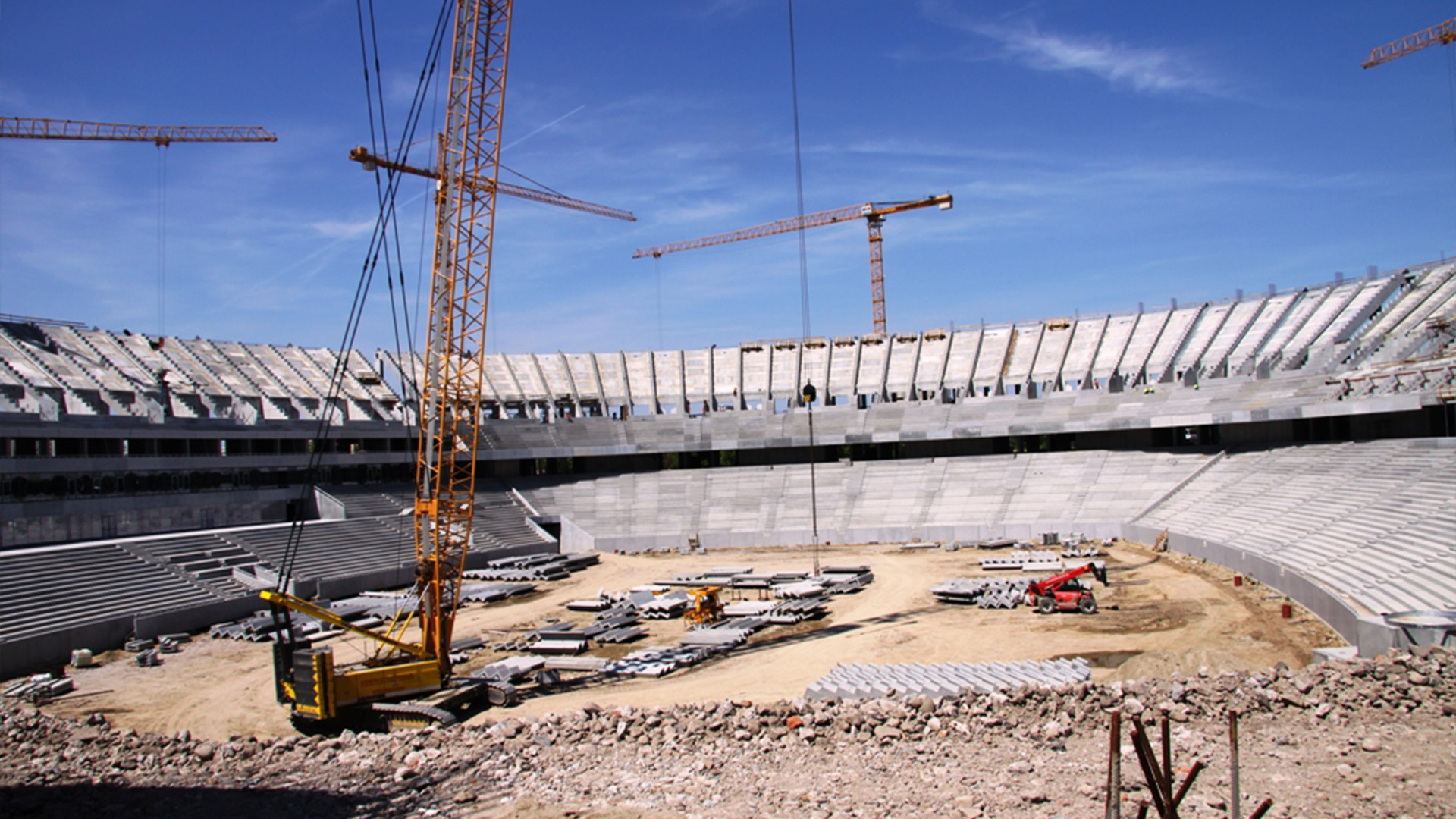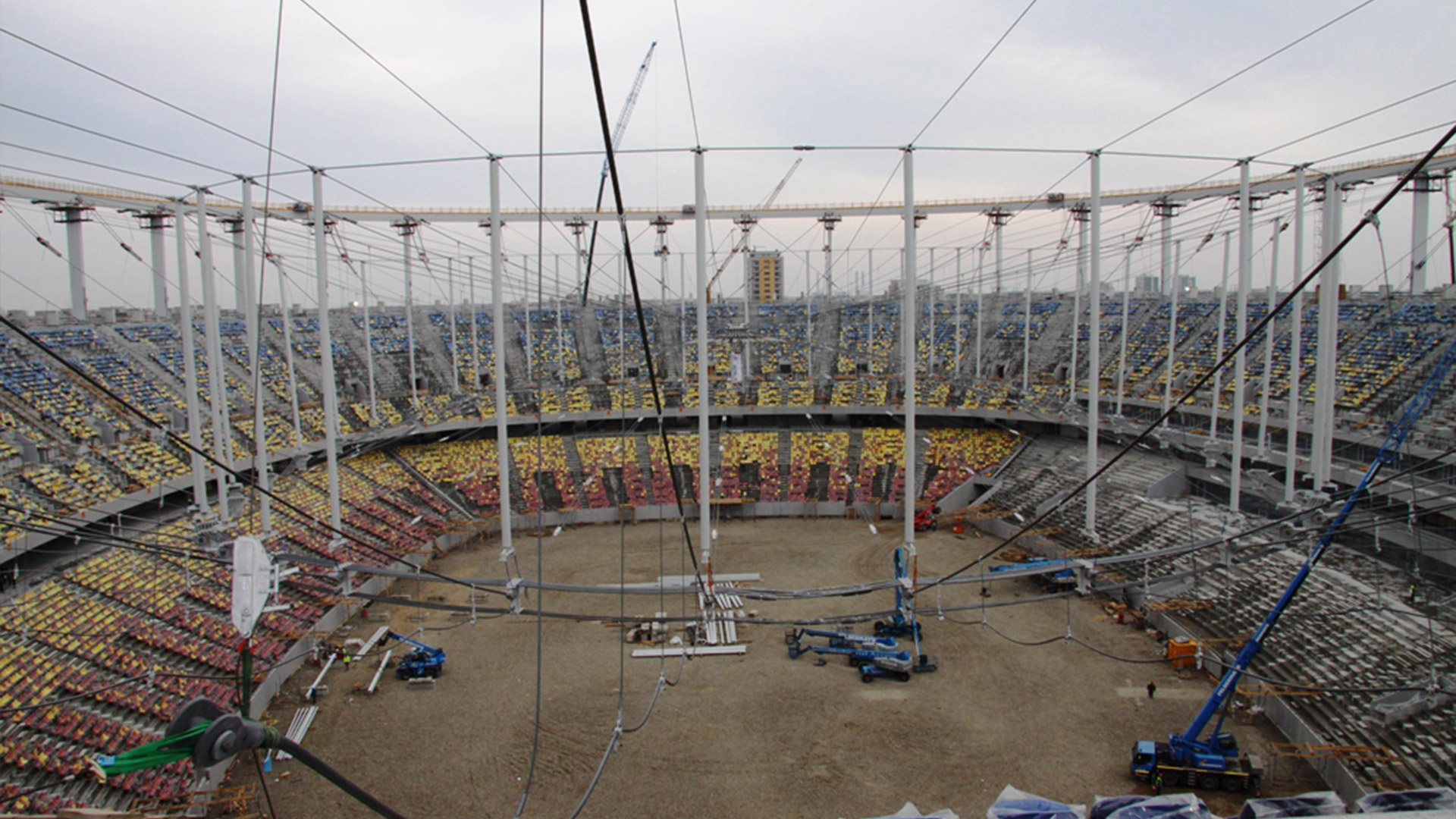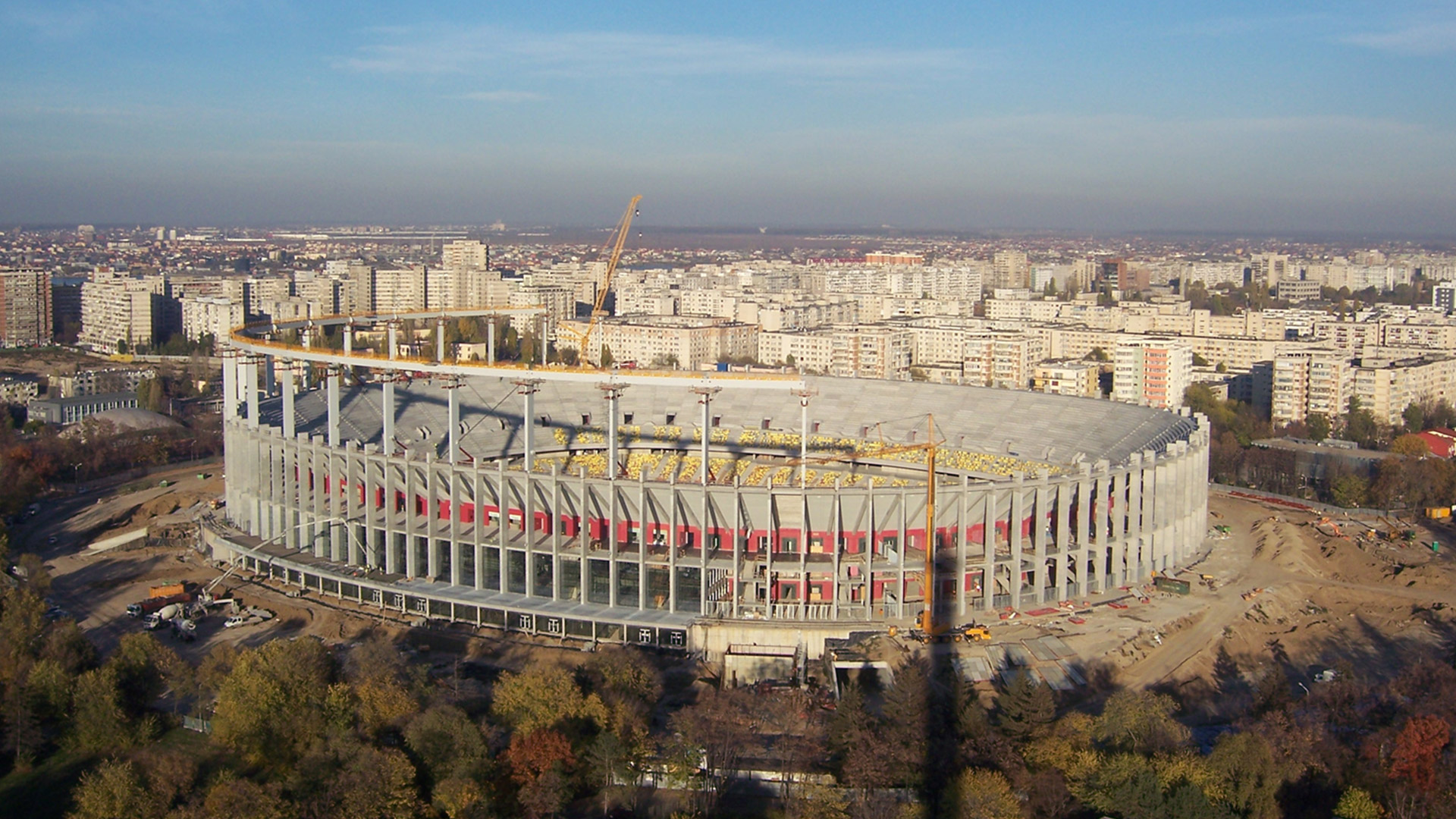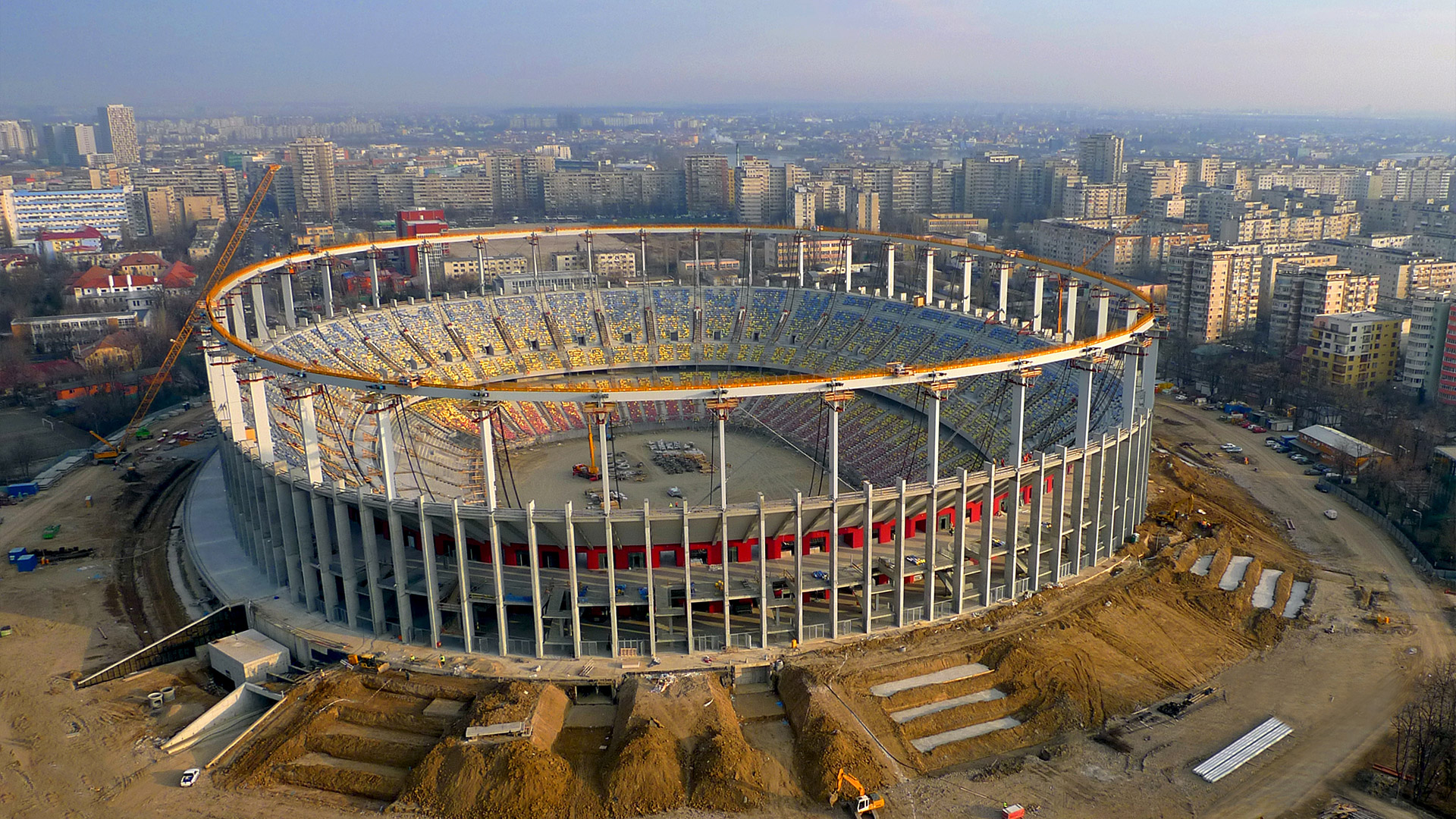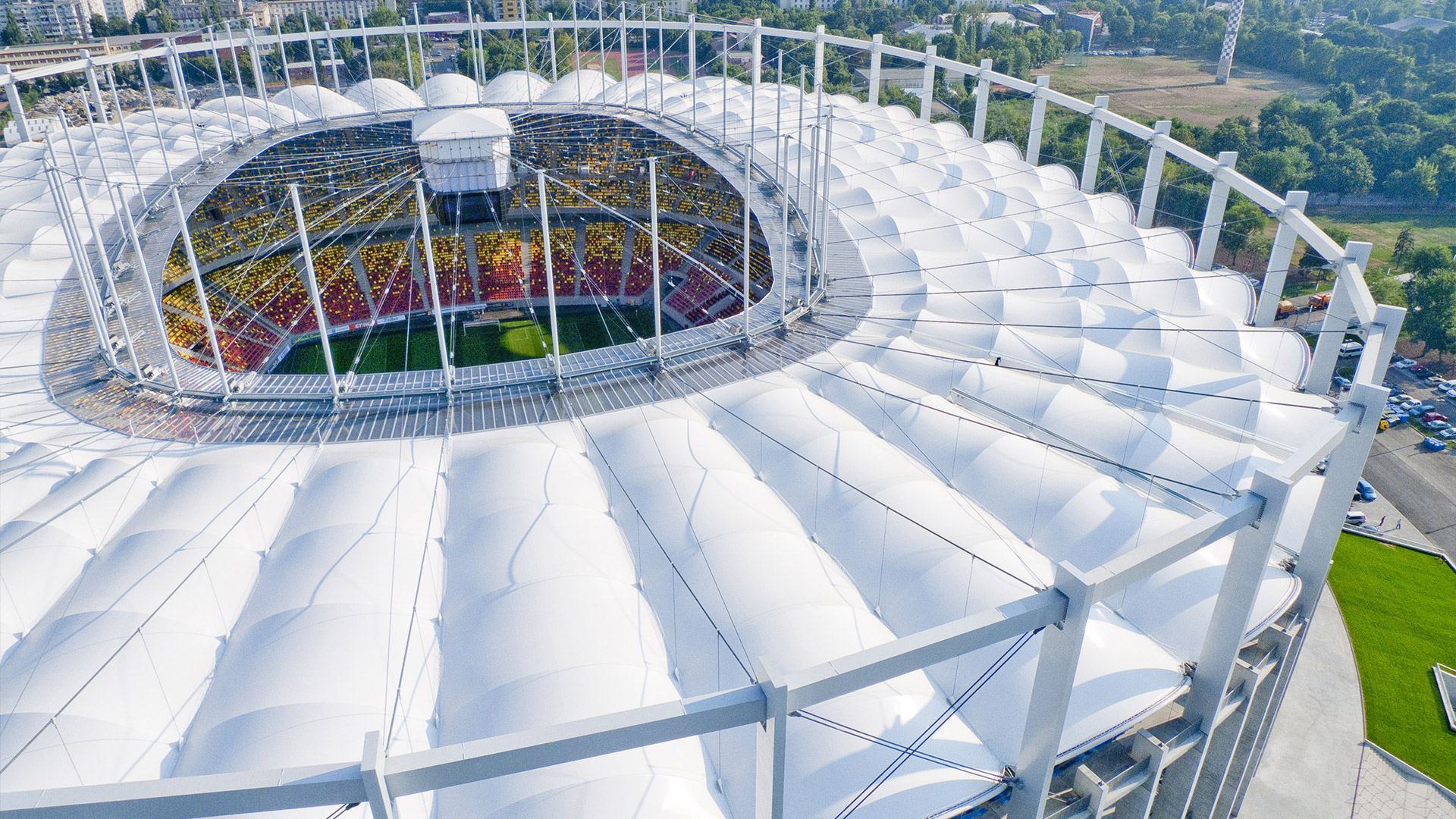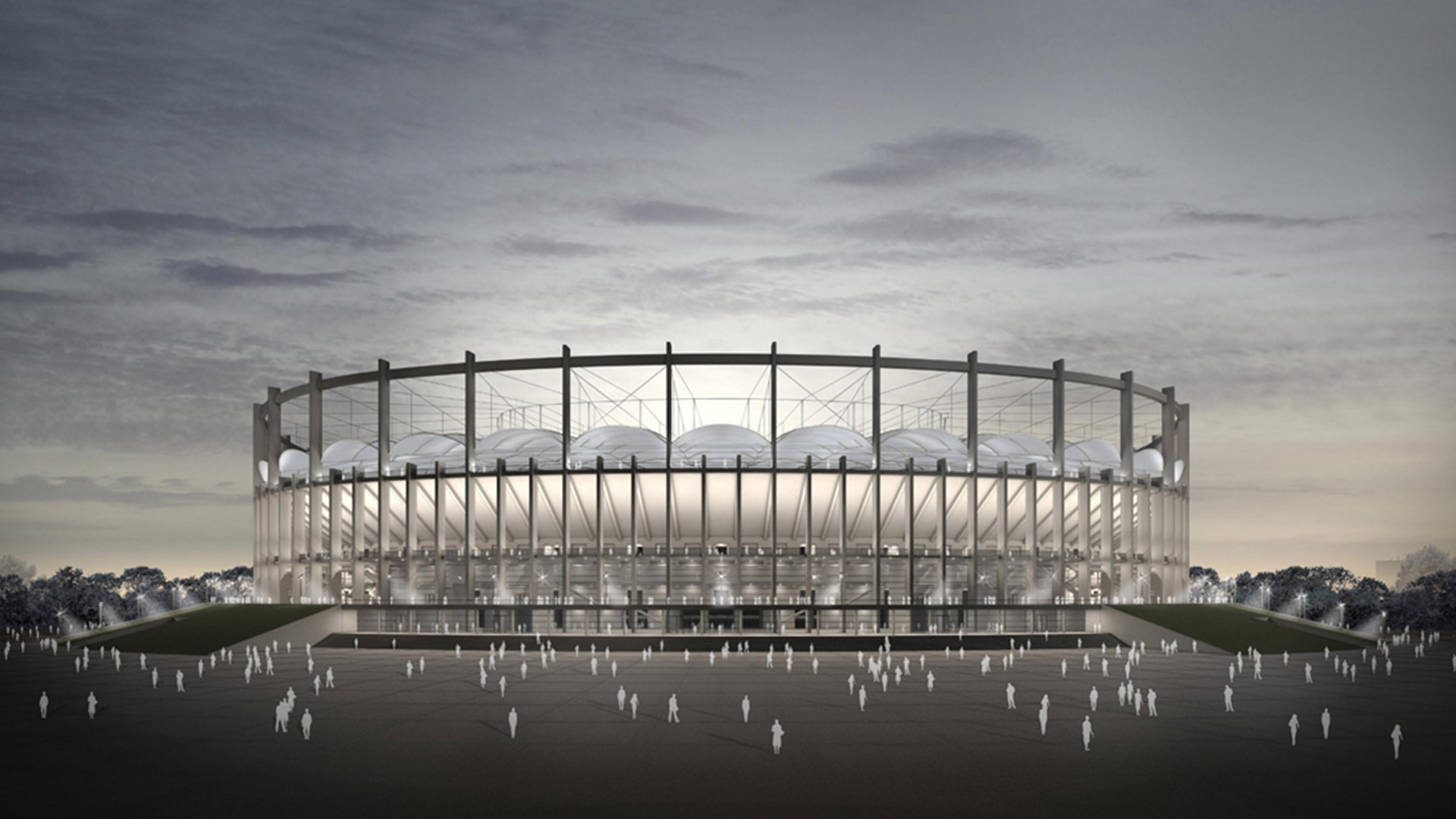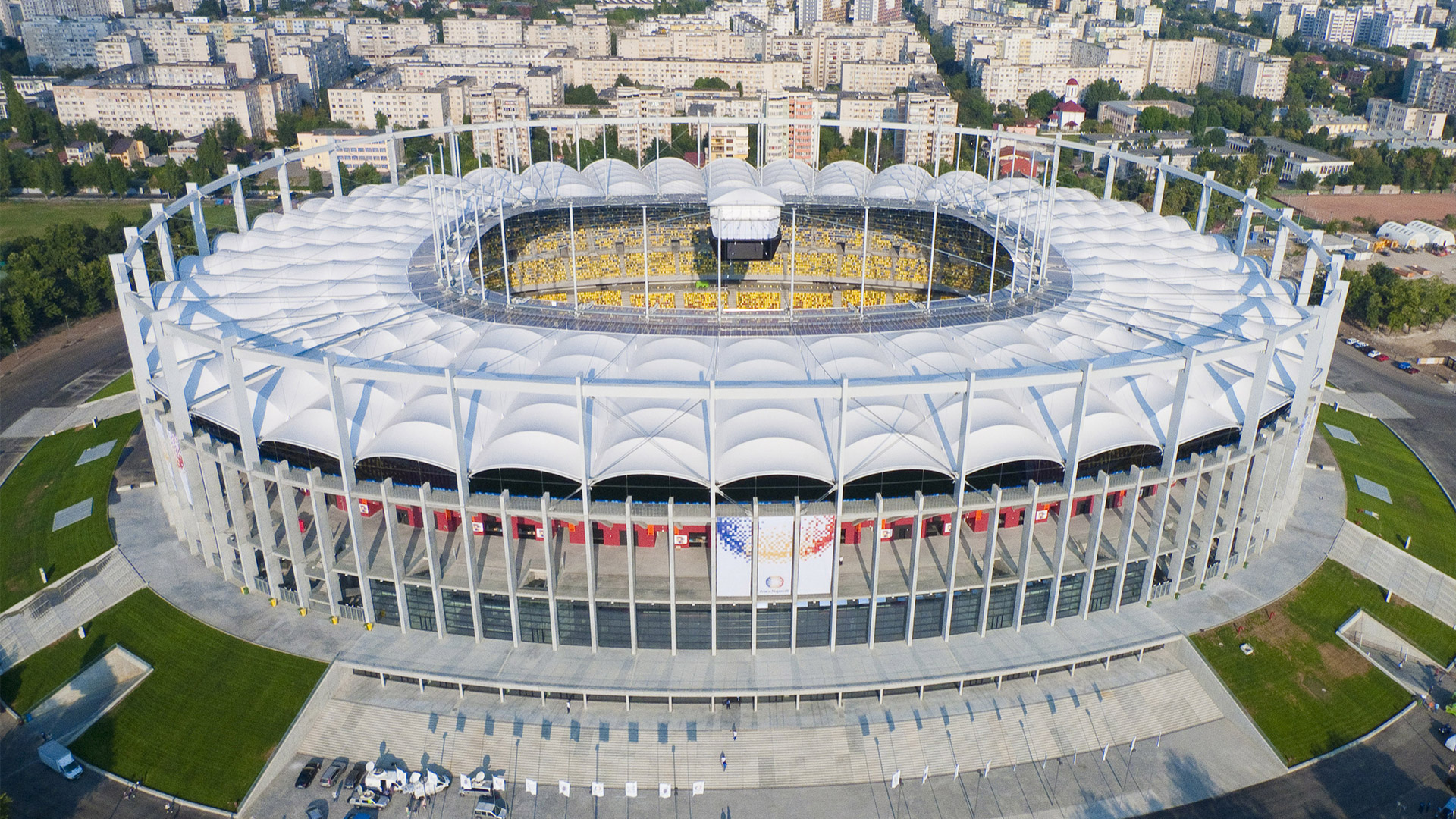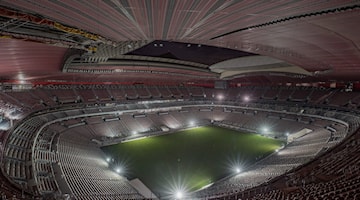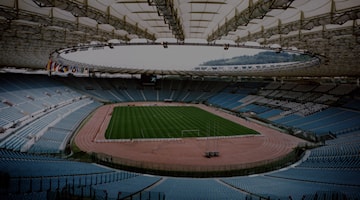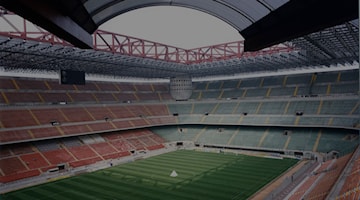A home for sports
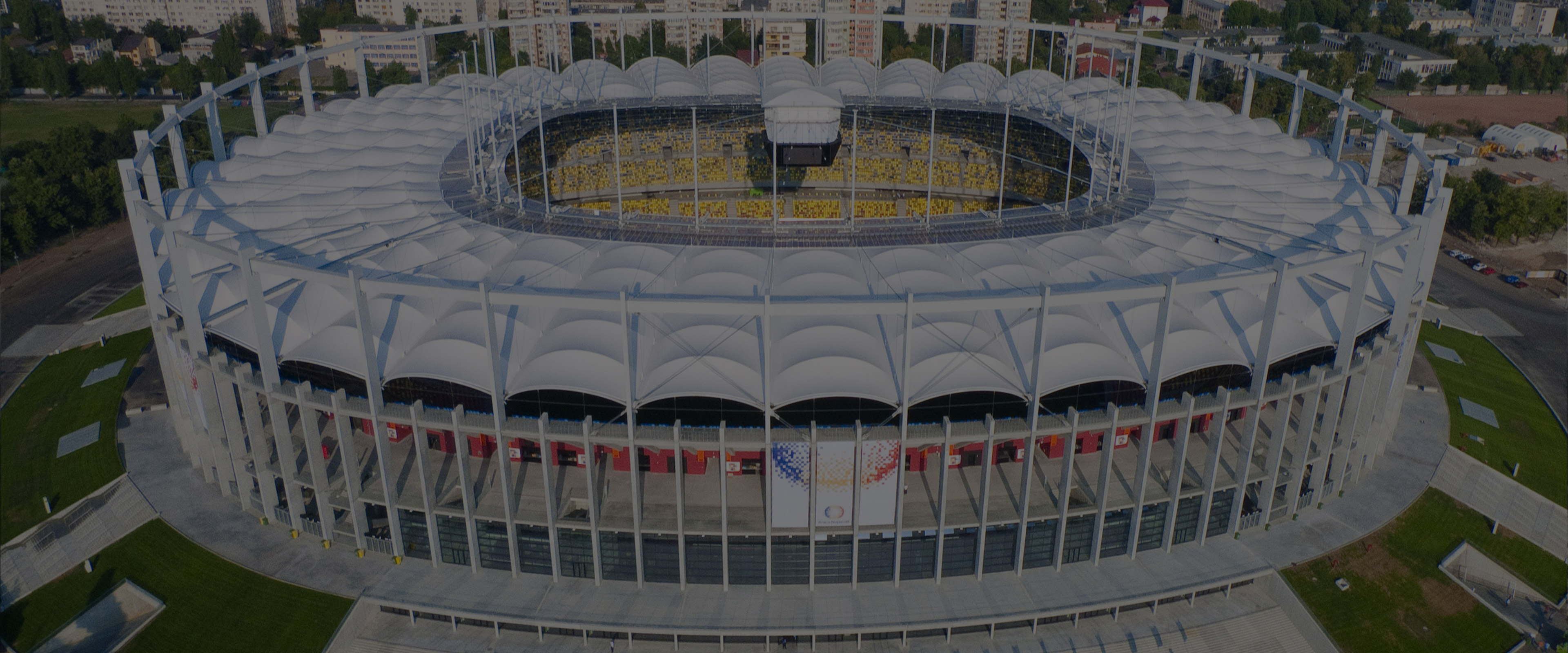
"LIA MANOLIU" NATIONAL ARENA IN BUCHAREST, ROMANIA
The Bucharest stadium, classified with four UEFA stars, can seat 55,634 people. Its capacity can even increase to reach 63,000; it was built on an earlier 1953 stadium that was demolished and completely rebuilt in the 2007-11 period; the playing field measures 105x68 m.
It is in a neighbourhood that was peripheral at the time, but in the 2010s, thanks to the stadium, it became a symbol of modern Bucharest, a particularly lively and busy area, only ten minutes from the city centre.
Futuristic and contemporary elements certainly aren't lacking, like the essential design of the architecture and the dense concrete columns that support the weight of the velarium.
It was inaugurated on Sept. 6, 2011, by the Romania-France match, which was valid for the Euro 2012 qualifiers: ending in a 0-0 draw, it distanced the hosts from the championship; it also caused discussions about the poor quality of the playing surface, whose turf was later entirely rebuilt.
The stadium, besides hosting national team matches, is also the home of Steaua Bucharest, one of the most successful teams in Romanian history, which in the late 1980s had among its stars Gheorghe Hagi: a.k.a. the “Maradona of the Carpathians”, who is considered (among others, by Pelé) the best Romanian player of all time, as well as one of the greatest number 10s of his generation. Since 2020, the Arena Națională Lia Manoliu has also been the home of Dinamo Bucharest.
Home to the France-Switzerland match at Euro 2020, one of the first with increased attendance in the era of Covid restrictions, the stadium has also hosted numerous concerts by great music artists and bands, like Red Hot Chili Peppers, Metallica, Depeche Mode, Kings of Leon, Ed Sheran and Céline Dion.

THE WORK AND THE TECHNIQUE
SPECTATORS/SEATS
MT PLAYING FIELD SIZE
M² DEVELOPED AREA
M² AREA COVERED BY COATINGS
T REINFORCING STEEL
M² CAST-IN-PLACE CONCRETE
T REINFORCING STEEL
Municipality of Bucharest
GMP Architekten
Max Bögl 60 percent and Astaldi (now Webuild) 40 percentage
Bucharest's Arena Națională is a modern multifunctional facility that incorporates parts of the former stadium that stood on the same site (the old stadium, built in 1953, was no longer suitable for hosting sporting events with its uncovered stands and the track around the field. It was demolished in 2008).

CULTURAL INSIGHTS


Sustainability and ethics for contemporary sport
The main distinguishing feature of Bucharest's Arena Națională, the retractable velarium, offers considerable visual comfort supported by very energy-conscious plant solutions.
The energy consumption of a soccer stadium is not insignificant at all, especially in older, inefficient sports facilities: suffice to say that the electricity consumption of a large stadium (with a capacity of 40,000 to 80,000 spectators) for a 90-minute match averages to 25,000 kWh, like the annual consumption of ten households (around 2,700 kWh per year).
This estimate, re-elaborated on data produced by a Wall Street Journal study of U.S. stadiums, provides insight into why energy efficiency and plant and structural renovation of sports facilities are critical in terms of sustainability and ethics of contemporary sports.






